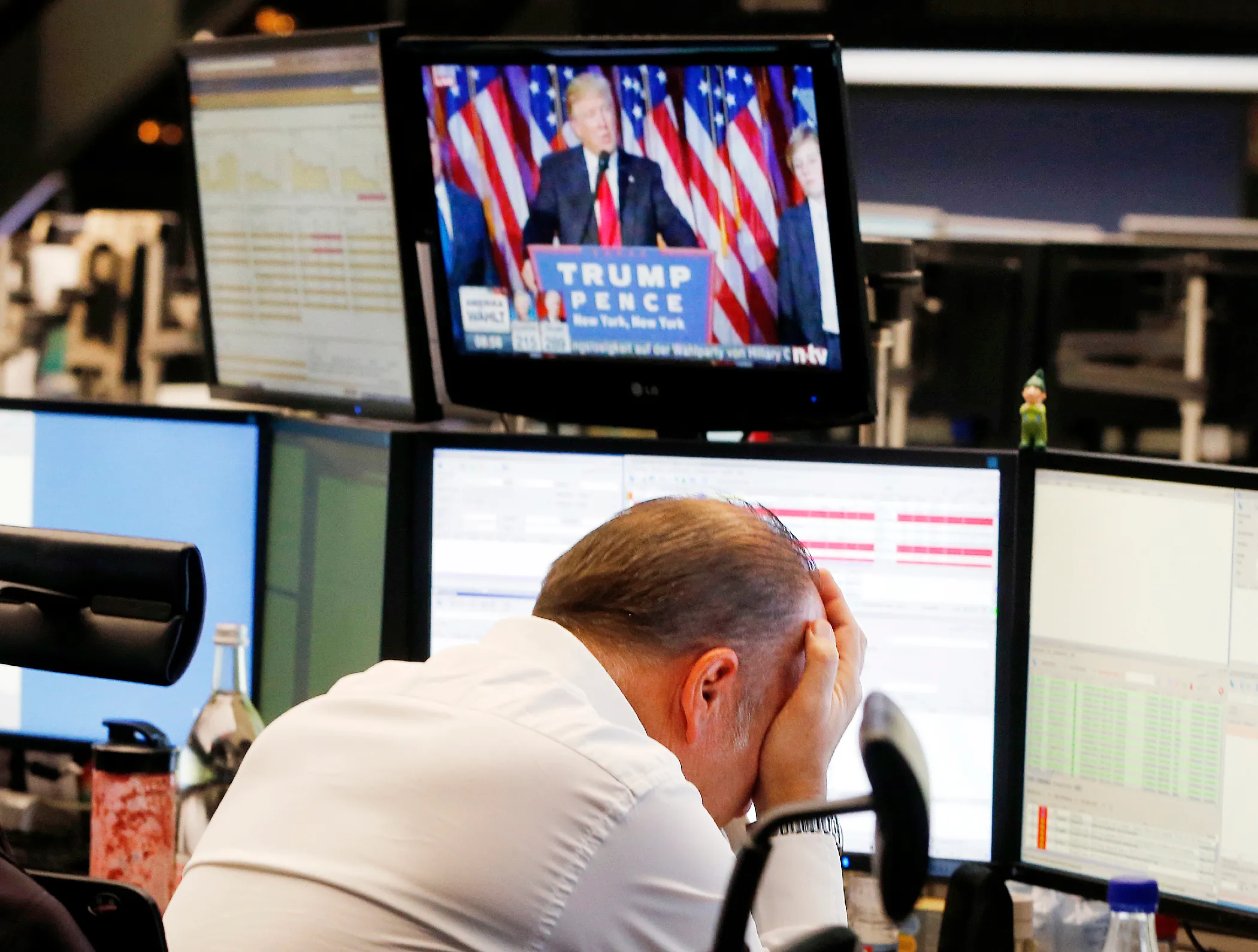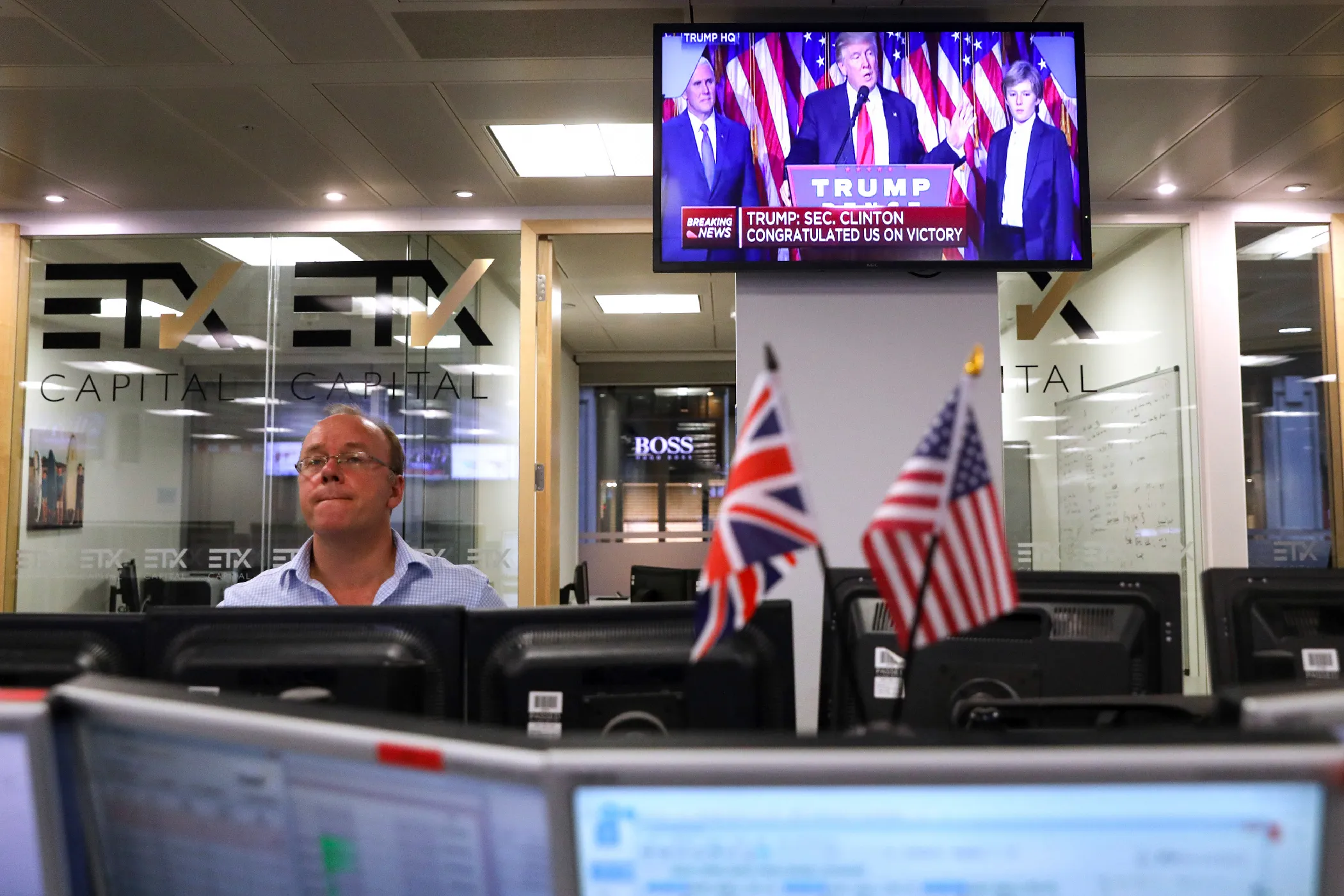What Trump’s Election Means for College Students and Parents

Elections, as they say, have consequences, and last night’s presidential victory of Donald J. Trump may have more than most.
While President-elect Trump’s policy statements during the campaign provided few details, here’s what we know about how current college students, future students, and their families might be affected.
In the short term
Until the President-elect takes office in January 2017, the greatest impact of his win is likely to be felt in the financial markets and their effect on students’ and parents’ college savings.
Families who are investing for college through a 529 college savings plan are likely to be insulated somewhat from market fluctuations if their money is in an age-based portfolio. While estimates vary, about 80% of all 529 assets are currently in such portfolios.
Age-based portfolios incorporate a “glide path,” investing more aggressively (that is, a higher percentage of stocks) when children are young and becoming more conservative (a higher percentage of less-volatile bonds) as children approach college age.
According to Brian Boswell, vice president for research and development at Savingforcollege.com, by the time a student is within a year or two of college, an age-based portfolio should be close to 100% in bonds and at most 5% to 10% in stocks. That would be true throughout college, as well.
Because glide paths vary from company to company, fund to fund, and even state to state, however, parents who are concerned about their risk exposure may want to check with their plan to see how their portfolio breaks down. Boswell points out that you can make changes in how your money is allocated among funds twice a year (although it’s usually best not to do anything in haste).
529 plans are also a relatively safe place for your college savings, he points out, because their funds tend to be well diversified.











If you have money invested for college outside of a 529 plan, of course, it will be subject to the risks of the underlying investments. Money in bank accounts is federally insured up to certain limits. Individual stocks, bonds, and mutual funds will fluctuate, for good or ill, according to the customary market forces.
In the longer term
Over time, a Trump administration is likely to make changes to the way students pay for college.
Student loans. Some Trump advisers have floated ideas that could dramatically affect student loans. Among them:
- Privatization. Sam Clovis, the national co-chair and policy director of Trump's campaign, has discussed getting the federal government out of the business of making student loans, and handing off that duty to banks, credit unions, and other lenders.
- Risk-sharing. Many Trump supporters (and some Democrats) have proposed requiring colleges to bear some of the financial risks of student loans. Currently, the major risk colleges bear is that they can lose access to federal student aid if more than 30% of their students default on their federal student loans within three years. Some think tanks have proposed reforms that would, for example, have the government give financial bonuses to colleges that have better repayment rates—and charge fines to colleges with worse repayment rates—than colleges that serve similar kinds of students.
- Risk-adjusted interest rates. Clovis also suggested that the private lenders and colleges should charge different students different rates, depending on the lenders’ views of the students’ eventual earning prospects. Currently, the federal government charges all undergraduates 3.76% in interest plus 1.07% in up-front fees, for an annual percentage rate of about 4%, no matter what their college, major, or career plans.
Of course, financial realities may stymie any radical changes to student loans. Research shows that the federal government charges such low interest rates on undergraduate loans that there is little profit potential in them for private lenders unless they raise rates. And that would mean that the federal government might have to subsidize the loans anyway to keep a college education within reach of students. Risk-adjusted rates might also prove discriminatory because women and minorities often earn lower salaries.
Student loan repayment plans. In a speech in October, candidate Trump said he’d tweak currently available student loan repayment plans that tie your monthly bill to how much you earn. Under his proposal, graduates would pay 12.5% of their income for 15 years, after which the remaining balance would be forgiven. “You graduate from college and you’re starting out with like an anchor around your neck,” he said in the speech. “No good. It’s no good.”
More than 5 million borrowers are currently enrolled in an income-driven repayment plan, a number that’s surged in recent years. Yet the earliest you currently can have debt forgiven under those plans is 20 years. Current versions of income-driven repayment were developed during George W. Bush’s administration and limited payments to 15% of income, with outstanding debt forgiven after 25 years. The Obama administration built on that, lowering payments to 10% of income with a 20-year period for forgiveness. More recently, the government expanded who qualifies for income-driven plans.
Both Democrats and Republicans have supported repayment plans tied to borrowers’ ability to pay, so Trump’s idea here could be more broadly supported than some of his others.
One part of his loan repayment position that’s less clear: Trump made a brief comment in his October speech that suggested he might want to eliminate Public Service Loan Forgiveness. That benefit, first announced in 2007, forgives the debt of government and nonprofit workers after just 10 years of payments. So far, more than 400,000 borrowers have submitted documents saying they plan to apply for the forgiveness, which would begin next year.
Lowering college costs. Also in his October speech, Trump said he’d push colleges to cut tuition, and he maintained that the “skyrocketing” cost of college is due in part to administrative bloat on campuses. He said he would reduce federal regulations on colleges, so they don’t have to spend as much on compliance and can then pass on those savings to students. And if colleges don’t devote more money to making their degrees affordable for students, they would face penalties, Trump said, including possibly losing tax-exempt status for large endowments.
“We have a lot of power over the colleges, and they’re not doing the job of cost-cutting because they don’t have the incentive to cut,” he said.
Shutting down the Department of Education. Trump has said he’d like to eliminate the U.S. Department of Education. That’s a common Republican campaign line, and presidential primary candidates including Ted Cruz, Rick Perry, and Marco Rubio have also promised to cut funding to the Education Department. Most experts think totally eliminating the department is a far-fetched idea, and even some of Trump’s own policy promises—such as requiring colleges to cut costs—would seem to need some kind of federal agency oversight.
The fate of for-profit colleges. Trump founded Trump University, which, despite its name, didn’t confer actual college degrees. But experts say the real estate seminar program’s practices did share many similarities with the for-profit college industry. (A class-action lawsuit alleging fraud by Trump University is scheduled to go to court later this month.)
Trump’s stated desire to reduce government regulations could mean less oversight of for-profit colleges, which have experienced closures and plummeting enrollment during Obama’s years in office. The Department of Education last year made a "gainful employment" rule, which requires for-profit colleges to prove they prepare students for well-paying jobs before they can be eligible for federal student aid. And just last month, the department finalized rules to help borrowers get debt relief if they attended fraudulent colleges.
On Wednesday morning, as the stock market reacted to the widely unexpected Trump victory, stocks of some of the largest for-profit companies were trending up. As of 11:30 a.m. Wednesday, Bridgepoint Education, DeVry Education Group, Apollo Education Group, and Strayer Education were all up between 4% and 10%.